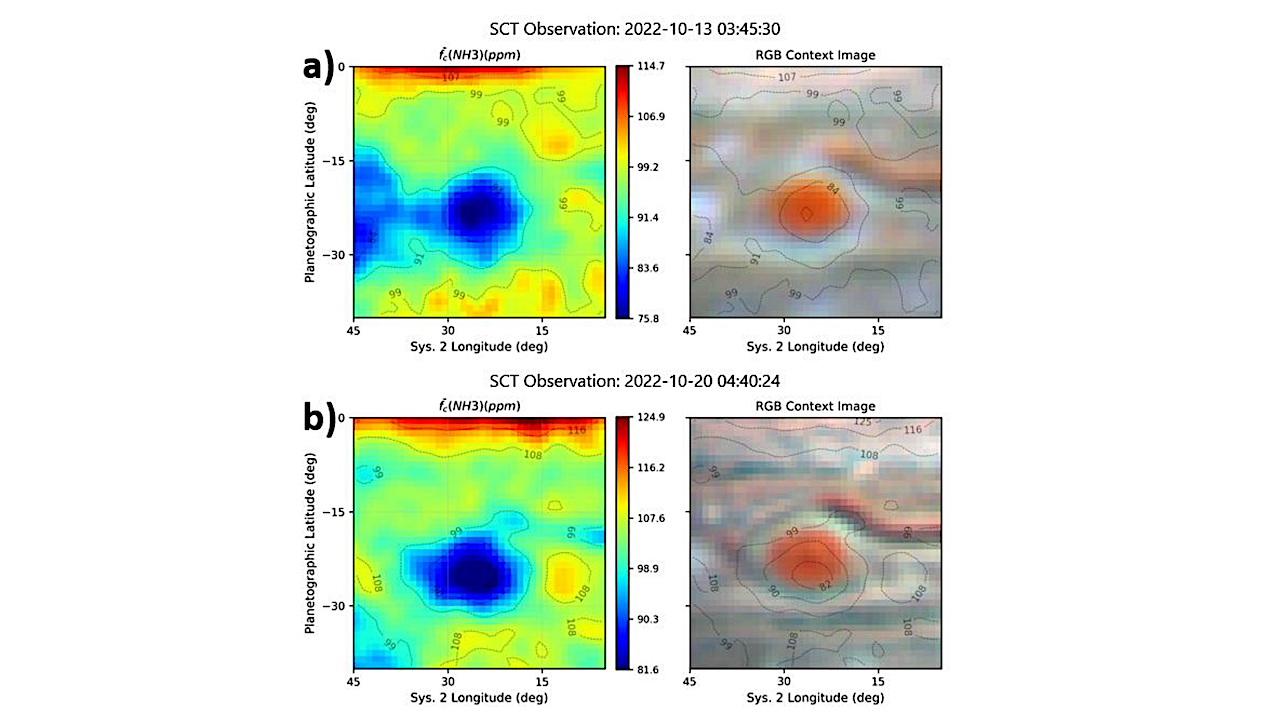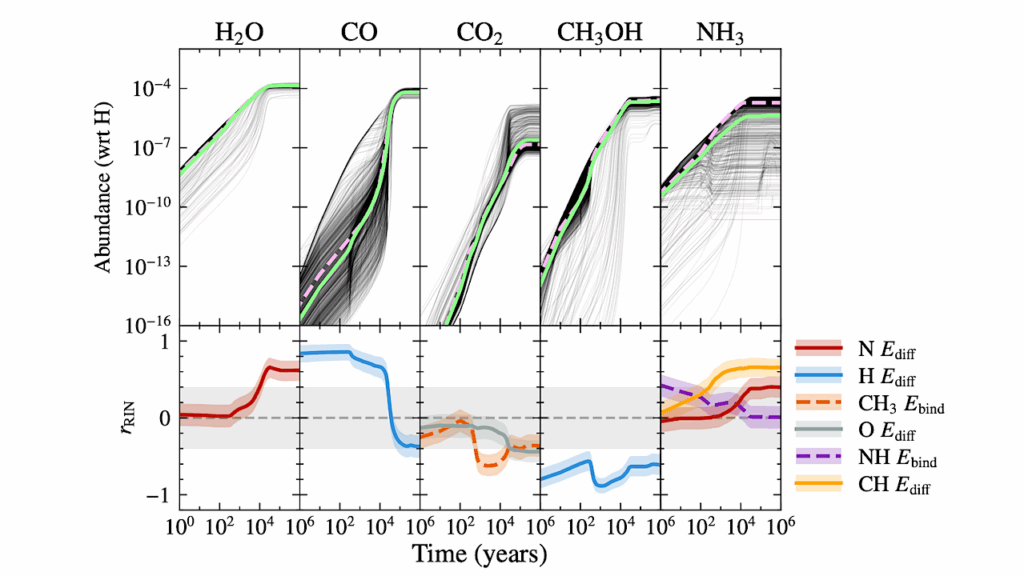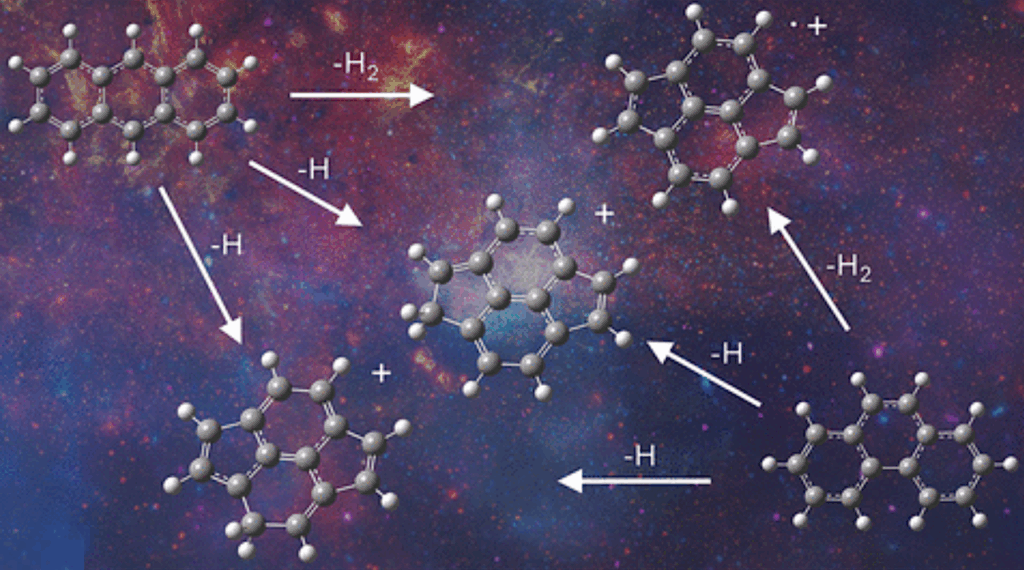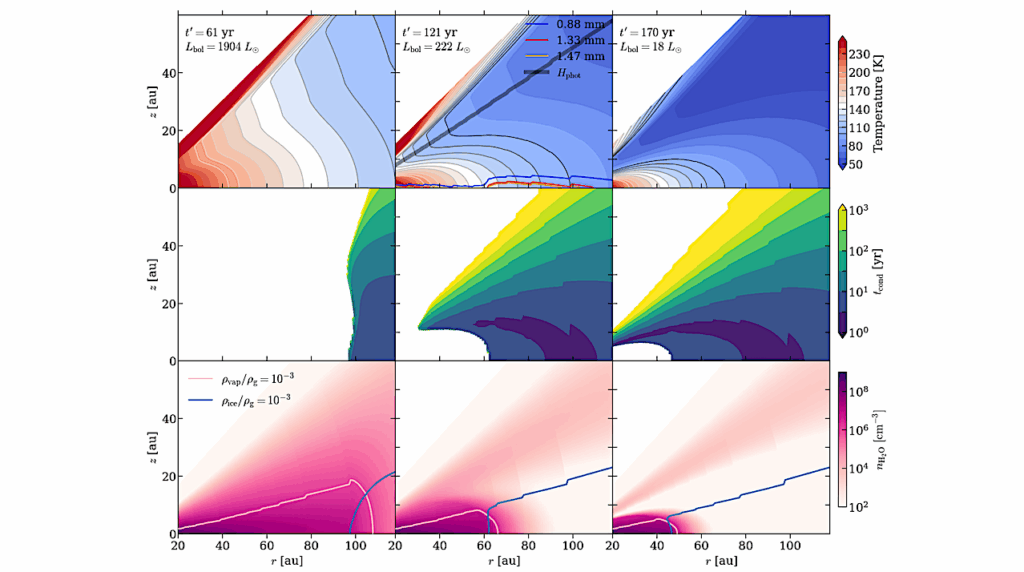Spatial Variations of Jovian Tropospheric Ammonia via Ground-Based Imaging

Optical bandpass-filter observations can be simply processed to determine similar horizontal ammonia distributions above the Jovian cloud tops as mid-infrared and microwave observations.
Current understanding of this distribution and its relationship to aerosol opacity, cloud-top pressure, and circulation is provided by atmospheric retrieval models using observations from major ground-based facilities and spacecraft. These techniques recover high fidelity information on the ammonia distribution but are limited in spatial and temporal coverage.
Part of this coverage gap – upper tropospheric abundance – can be bridged by using continuum-divided ammonia and methane absorption images as suggested by Combes and Encrenaz [1979]. In 2020-21, Jupiter was imaged in the 645 nm ammonia absorption band and adjacent continuum bands, demonstrating that the spatially-resolved optical depth in that band could be determined with a 0.28-m Schmidt-Cassegrain telescope (SCT).
In 2022, a 620 nm filter was added to include methane absorption images in the same wavelength range. Methane abundance provides a constant reference against which to determine the ammonia abundance, specifically the column-averaged mole fraction above the clouds. VLT/MUSE results are compared to these SCT results and those from the TEXES mid-infrared spectrometer used on the IRTF and the Gemini telescopes.
Meridional and longitudinal features are examined, including the Equatorial Zone (EZ) ammonia enhancement, the North Equatorial Belt (NEB) depletion, depletion above the Great Red Spot (GRS), and suggested enhancements over bright plumes in the northern EZ. This work demonstrates meaningful ammonia monitoring that can provide synoptic coverage and continuity between spacecraft or major ground-based facility campaigns.
Steven M Hill, Patrick G. J. Irwin, Charlotte Alexander, John H. Rogers
Comments: 23 pages, 8 figures
Subjects: Earth and Planetary Astrophysics (astro-ph.EP)
Cite as: arXiv:2311.16422 [astro-ph.EP] (or arXiv:2311.16422v1 [astro-ph.EP] for this version)
Submission history
From: Steven Hill
[v1] Tue, 28 Nov 2023 02:02:20 UTC (1,125 KB)
https://arxiv.org/abs/2311.16422
Astrobiology








